While schools and universities boast urban legends alongside ghosts, prisons tend to be more like hospitals. You find tales of hauntings, but little in the way of folklore. It’s probably due to the concentration of human life in one place – and the brutality that runs alongside it. Haunted prisons somehow don’t seem so surprising.
That’s not to say they’re the only tales about prisons. According to the Illustrated London News, a specific Will-o’-the-Wisp haunts prisons. Any prisoner who sees the wisp will “come to a violent death” (1898: 35).
Yet we’re concerned here with haunted prisons. Due to matters of space, our main focus is on just three prisons: Joliet Prison in Illinois, Shepton Mallet in Somerset, and Barlinnie Prison in Lanarkshire. You can find more about Belfast’s Crumlin Road Gaol here.
As a content warning, the tales involve death or violence due to the subject matter. If this will be difficult for you, feel free to skip this week’s instalment and I’ll see you next week for libraries folklore. Take whatever care of yourself that you need.
But otherwise, let’s look at these three haunted prisons…
A Haunted Cell
An issue of the Spiritualist newspaper related the tale of a haunted cell in Joliet Prison, Illinois. The prison dates back to 1858, when 53 prisoners arrived and built the prison themselves. By 1878, the prison was over capacity, unsanitary, and dangerous.
It is from these conditions that the ghost stories were reported by the Spiritualist newspaper. A prisoner named Chase once occupied the cell, which explains its frequency as a site of phenomena in reports (1874: 9).
One prisoner who occupied the cell reported seeing Chase several times, and one sighting involved a headless ghost. On another occasion, “his head seemed to be opened and the brains taken out”, which references the experiments done on his skull following his execution. The prisoner reported that he appeared between 10:50 pm and 3 am (1874: 9).
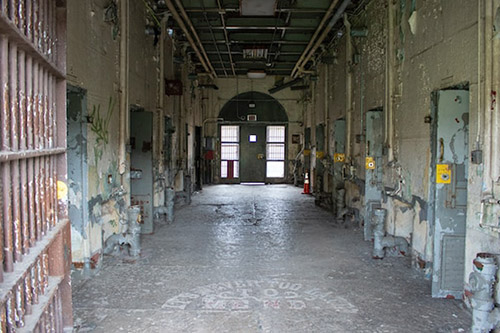
Other prisoners corroborated the reports of marks on Chase’s neck, or portions of his skull being missing when the phantom appeared. A favourite trick of the ghost was climbing into the bunk nearest the wall and pushing the prisoner out of it. Some prisoners reported feeling cold, clammy hands on them, yet they also felt paralysed and unable to move (1874: 9).
People at the prison noted that prisoners often refused to sleep in the cell after their first night there. What’s interesting is that many of these prisoners knew nothing of the ghost prior to their stay in his cell.
Talking to the Press
Surprisingly, some of the prisoners refused to speak to members of the press because they became “so disgusted with the way they magnify and distort the truth” (1874: 9). The prisoners were so convinced their experiences were real that they refused to see them turned into “ridicule and senseless sensation” by reporters (1874: 9).
We do have to be mindful that the Spiritualist newspaper had its own agenda in reporting the story. Yet their inherent belief in the supernatural meant their report isn’t filled with the ridicule the prisoners feared from other newspapers.
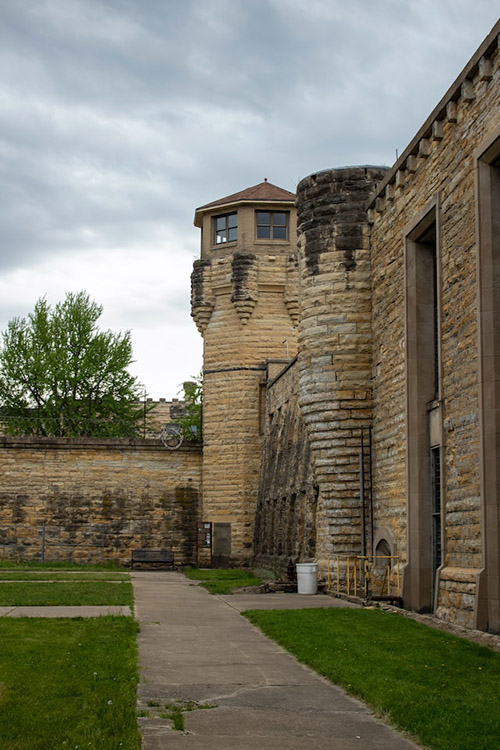
The prison closed for good in 2002 and began to rot. Tours of the prison started in 2018, and Ghost Adventures “investigated” it in 2019, ostensibly to contact the spirit of former inmate, John Wayne Gacy. In 2023, the prison continued to host its “haunted house” entertainment experience in the building. According to some websites, it’s one of the most haunted places on earth, yet they provide little evidence to back up the claim.
The White Lady of Shepton Mallet
And I bring up this idea of “most haunted place” or “most haunted prison” because Shepton Mallet Prison in Somerset also lays claim to being the world’s most haunted jail on the home page of its website. C Wing, once home to its female prisoners, is apparently one of the more haunted parts of the prison.
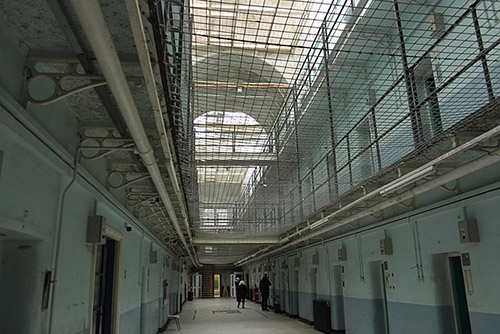
By comparison to Old Joliet Prison, Shepton Mallet Prison openly advertises its ghost tour as avoiding gimmicks, focusing on the stories of the jail rather than the “entertainment”. The prison also has a lengthy lifespan from which to draw its spectral occupants; it opened in 1625 and closed in 2013.
Long-term readers will know my fascination for White Lady ghosts (or Grey Ladies, or Green Ladies…) and Shepton Mallet Prison apparently has one. According to legend, she wafts through the prison and leaves intense cold in her wake.
According to the prison’s website, the story dates back to the 1970s (Shepton Mallet Prison 2023). Prisoners kept requesting extra bedding due to the cold, and people reported smelling perfume in the prison. Officers hated working the night shift, while prisoners grew uncomfortable in their cells. The prison asked the Home Office to investigate.
They did so, for three days, but found little conclusive evidence.
The Investigation
Now, I did find a story about the White Lady in a newspaper from 1967, who claimed she was beheaded in 1680. The prison governor, Barry Wigginton, claimed the disturbances occurred in June and July 1966, though they stopped and no one could ascertain what caused them (Wells Journal 1967: 11). He even investigated himself, spending a night in the duty room where staff reported “a weird presence”. Two prison chaplains also discounted the stories after investigating.
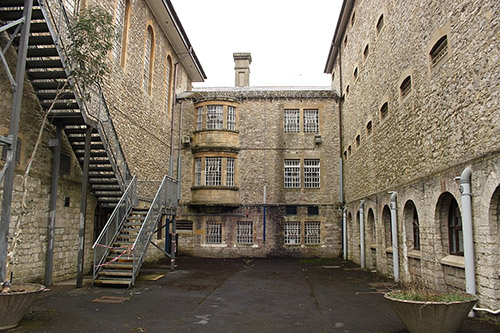
Despite this, warders continued to consider the prison haunted. They reported “unaccountable bangings, the sound of heavy breathing, and the feeling that something or somebody is present in the room while they are on duty” (Wells Journal 1967: 11). One warder even said he wouldn’t spend another night in the duty room even for £1000.
Over time, staff on duty at night began seeing white figures or shadows on the stairs.
Who Was the White Lady?
The website is incredibly vague about the backstory, saying they discovered the story of the White Lady “after some research”. A woman murdered her husband and was sentenced to execution – the website says she would be “hanged in the town centre”. If this is the case, then this story must have occurred before 1868, when public executions were banned (Bridges 2022). It also contradicts the 1967 newspaper article that the woman was beheaded – though hanging would have been much more likely.
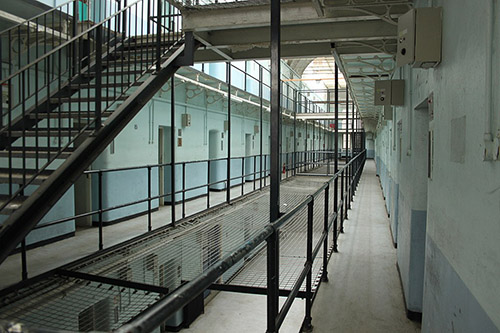
The night before the execution, the officers offered her a final request. She asked for her wedding dress. It was an odd request, but they complied. The following morning, the officers opened her cell and found her dead, still wearing the wedding dress. While they searched for evidence of wrongdoing, they found none, “and it was concluded that she must have died of a broken heart” (Shepton Mallet Prison 2023).
And now she apparently wanders the prison. Though it’s odd that the 1967 article refers to banging and feelings of unease…but no mention of ghostly perfume.
Other inmates include the Kray twins. People have apparently heard the ghostly cries of female prisoners, while visitors can book up to spend the night in a cell.
A Haunted Prison Library?
Staying with Shepton Mallet, it’s not just a White Lady that prisoners have had to worry about. A 1984 article in the Daily Mirror reported that prisoners claimed to be haunted by a figure in a World War II uniform. According to them, the figure floated in and out of the prison library. The gallows stood on the site before the jail, used by Americans during the Second World War.
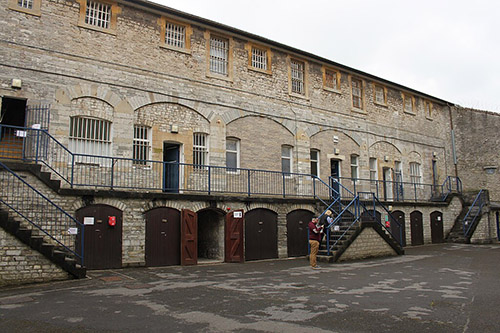
According to records, sixteen American soldiers were hanged, while two met their end by firing squad (Connolly 2021). Conditions at the prison were so horrific that a prisoner wrote to his parents and described it as “worse than ever I imagine hell to be” (Hancock 1995: 3). Politicians raised matters with President Eisenhower once they discovered that over 70% of executions involved Black prisoners. Though ultimately, nothing was actually done.
Prisoners believed the ghost to be a serviceman hanged on Death Row. When asked, the Home Office confirmed the library did stand on the gallows site, but also said, “We do not intend to do anything about it” (Young 1984: 9).
No change there, then.
A Poltergeist at Barlinnie?
In 1969, three prisoners at Barlinnie Prison in Glasgow claimed their cell was haunted. What makes this one unusual is their occupation of the cell pre-dated the haunting. Normally, you’d expect a situation like Joliet Prison, where prisoners move into the haunted cell.

The ghost only turned up on Friday 15 August 1969, and began throwing things around in the cell, starting with a mirror. It seems the mirror didn’t concern the men until mugs started throwing themselves from a shelf. A prisoner released on Monday 18 August confirmed the story, saying all three cellmates insisted the ghost was real. One of them requested a move to another cell (Aberdeen Press and Journal 1969: 11)..
An official spokesman at the Scottish Home and Health Department declined to comment, saying they did not “comment on matters of internal administration” (Aberdeen Press and Journal 1969: 11).
It’s not the only tale of haunting associated with the prison. Others have reported seeing a Victorian woman with a lantern. She loiters in the area outside the surgery wing and the entrance to the execution space (Paranormal Database 2023).
What do we make of these stories of haunted prisons?
Before I started researching this post, I found it fascinating how many prisons that are now museums claim to be haunted and oh! They coincidentally run ghost tours!
But then once I started researching them, it became apparent that staff and inmates did report stories of hauntings in earlier times.
Some stories feel more ‘solid’. The Joliet Prison tale includes a named prisoner believed to be responsible, tying the story into the life span of the jail. The investigations launched into tales of haunting also help to back up the fact that people believed there was a ghost…at least in order to report the story.
Yet while the Shepton Mallet White Lady sounds plausible, I would have thought the “research” might have furnished us with a name and a year – unless you need to go on the tour to find that out.
And it’s possible the tales of haunted prisons might be invented by bored prisoners, and the difficult conditions might prompt warders to feel uneasy, especially at night. But ghost stories also don’t seem the kind of thing you’d buy into if you wanted to maintain a strong reputation.
I think it’s entirely likely that prisons would be haunted, for the same reason other buildings are: they contain a wealth of human activity, and they’re also often a site of death. If ghosts really do linger where a person met their end, then it stands to reason inmates would remain.
But the idea of turning these spaces into ‘haunted house experiences’ makes me a little uneasy. I’m not sure the horrific conditions, or indeed the executions carried out on site, make these appropriate venues for entertainment.
Do you know any stories of haunted prisons?
References
Aberdeen Press and Journal (1969), ‘Riddle of Scots Prison Ghost’, Aberdeen Press and Journal, 19 August, p. 11.
Bridges, Paul (2022), ‘The long fight: executions and death-penalty reforms in Britain’, Museum of London, https://www.museumoflondon.org.uk/discover/long-fight-executions-and-death-penalty-reforms-england.
Connolly, Nancy (2021), ‘The Somerset prison that some say is the world’s most haunted’, Somerset Live, https://www.somersetlive.co.uk/news/somerset-news/somerset-prison-white-lady-ghost-6119844.
Hancock, Mervyn (1995), ‘Grim past of the West’s ‘hell’ jail’, Western Daily Press, 2 December, p. 3.
Illustrated London News (1898), ‘Will-o’-the-Wisp’, Illustrated London News, 22 October, p. 35.
Paranormal Database (2023), ‘Prison Ghosts, Folklore and Forteana’, Paranormal Database, https://www.paranormaldatabase.com/reports/prisons.php.
Shepton Mallet Prison (2023), ‘Ghost Stories From Behind Bars ~ The White Lady’, Shepton Mallet Prison, https://www.sheptonmalletprison.com/paranormal-news/ghost-stories-from-behind-bars-the-white-lady/.
Spiritualist (1874), ‘A Haunted Prison’, Spiritualist, 13 February, p. 7.
Wells Journal (1967), ‘Ghost Stories Don’t Worry Jail Governor’, Wells Journal, 20 January, p. 11.
Young, Sydney (1984), ‘Wartime ghost ‘haunts prison”, Daily Mirror, 2 November, p. 9.
Nutty about folklore and want more?
Add your email below and get these posts in your inbox every week.
You'll also get my 5-step guide to protecting your home using folklore!








Just FYI – I am enjoying your new folklore book !
Histories like this are fascinating, and it’s so interesting to read about the prisoner’s experiences (and reluctance to share it with the media). I must admit I don’t know much these particular prisons, so reading this was so interesting. I will have to find out more about them!